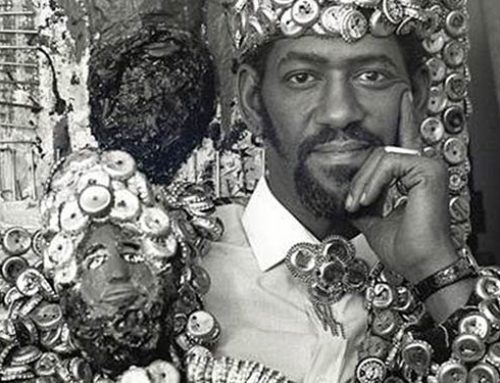Teach about Black Artists Series: Jacob Lawrence History Lesson and Art Project

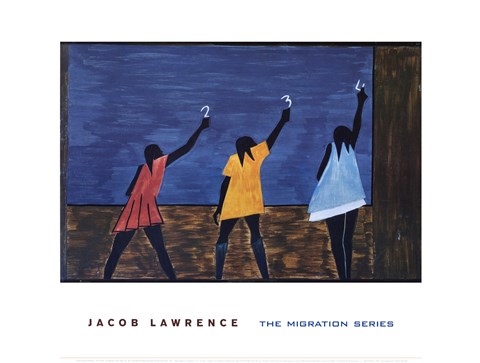
The paradox that the most effective propaganda for understanding the Negro problem should be visual truth is the essence of Jacob Lawrence’s work. For this young Negro has, in his own words, “tried to paint things as I see them.” In this lies his power as a painter; his perception and his comprehension are never literary, and his mode of expression is pictorial rather than illustrative. Lawrence’s pride (certainly merited) is the fact that his work has reached a wide public through acceptance of museums across the country, a tribute to a painter with a purpose rather than a propagandist.
Assigned to “Station Museum of Modern Art” by the Coast Guard for the opening of his one man show, he looked at his gouaches, some of which he had never seen hung before, with modest pleasure. The forthright paintings, devoid of bitterness or overstatement, are reflections of the sincerity and honesty of the man.
The way Lawrence sees is in terms of pattern in bright primary color, unmodulated (so that no black and white reproduction can do him justice), and in simplification of form. Form is simplified in order to articulate the essentials. Detail is suppressed except where it functions both as part of design and basic part of fact. His steep perspective generates immediacy.

Lawrence seems to have been born with a sense of pattern. “I always used to make designs as a kid,” he says. “Used to make masks, and designs for rugs—for anything. And I’ve always been interested in stage designs. I’ve even made some theater models.” To design state-sets is one of his post-war hopes, along with a Guggenheim, a trip to Mexico, a series of paintings on John Henry, and a try at silk-screens.

Born in Atlantic City, his mother brought him as a child to Harlem via Philadelphia. His first break, he thinks, was that his work “as a kid” came to the attention of Charles Alston, the Negro painter, who was then studying at Columbia. Alston urged him to come to the 135th Street Public Library classes. He continued studying with Alston and Henry Bannarn. The Federal Arts Project and beginning in 1941 a Rosenwald Fellowship three years running gave him his next opportunities.
Lawrence has painted Negro themes always, from historical series to contemporary life, which he considers “all part of the same problem, and its progress.” His honeymoon to New Orleans in 1941 was his first trip South, where Jim Crowism and the desperate economic plight of the Negroes became an emotional reality. “It didn’t surprise me,” he says, “but for the first time I really felt it.” On Coast Guard duty in the South later he started pen and ink drawings. “Maybe because of the way they think, Southerners look different—cold, inhuman,” he added, indicative of the man who feels through his eyes.
SOURCE: CLICK HERE
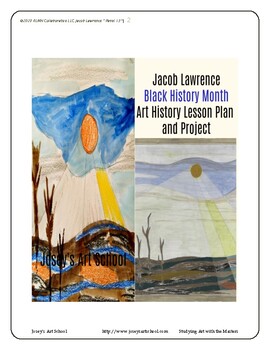
TO PURCHASE RESOURCES THAT HELP YOU TEACH ABOUT BLACK ARTISTS, CLICK HERE
Teach about Black Artists: Yinka Shonibare Black History Art Lesson

Shonibare’s artwork explores contemporary African identity and its relationship to European colonialism through painting, sculpture, installation, and moving image. Shonibare is best known for his work with visual symbols, especially the richly patterned Dutch wax fabric produced in Europe for a West African market that he uses in a wide range of applications. His tableaux of headless mannequins costumed in this fabric evoke themes of history and its legacy for future generations. Through these works he explores the complex web of interactions, both economic and racial, that reveal inequalities between the dominant and colonized cultures of Europe, Asia, and Africa.
SOURCE: CLICK HERE
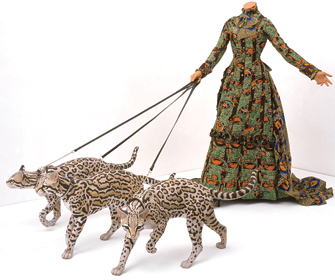
The British-Nigerian artist Yinka Shonibare makes work – often in sculpture, painting and tapestry – that looks unflinchingly at race, class and colonialism. The 58-year-old, who is partly paralysed after contracting a virus of the spine in his late teens, was one of the original YBAs and was shortlisted for the Turner prize in 2004. His 2010 sculpture Nelson’s Ship in a Bottle, a scaled-down replica of HMS Victory with sails made from his signature batik fabric, was one of the most memorable artworks on Trafalgar Square’s fourth plinth and now has a permanent home outside the Maritime Museum in Greenwich. Shonibare was recently given the 2021 Art Icon award by the Whitechapel Gallery.
SOURCE: CLICK HERE

These Western–style nineteenth–century costumes, worn by mannequins as if part of a historical display, are made from so-called African fabrics. "African fabric signifies African identity," explains the artist, "rather like American jeans (Levi's) are an indicator of trendy youth culture. In Brixton, African fabric is worn with pride amongst radical or cool youth [....] It becomes an aesthetics of defiance, an aesthetics of reassurance, a way of holding on to one's identity in a culture presumed foreign or different."
Although typically African and worn as an expression of an idealized unified identity, these wax–print fabrics are actually Dutch and were made in factories in England, where Yinka Shonibare, who was brought up in Nigeria, now lives and works. Originally made in Holland with an Indonesian technique, and exported to Africa, such fabrics bespeak colonial trade. The title is taken from a line in Alfred Hitchock's 1959 film North by Northwest, and like the cultural conflation of the work, poses a question about identity and becoming.
SOURCE: CLICK HERE

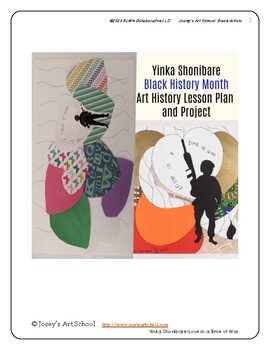
CLICK HERE TO FIND ART RESOURCES TO TEACH TO YOUR COMMUNITY: TEACH ABOUT BLACK ARTISTS
https://www.teacherspayteachers.com/Product/Black-History-Art-Shonibare-Love-in-War-K-6-Painting-Lesson-Common-Core-5274309
Teach About Black Artists Series: Betye Saar Black Artist Lesson Plan and History Lesson

Born in Los Angeles, Saar moved with her family to Pasadena in the early 1930s, shortly before the death of her father in 1931. Pasadena provided a rich cultural and artistic foundation, and she actively took part in arts and crafts classes that allowed her to experiment with a variety of approaches to making objects. Initially a design student at Pasadena City College, Saar transferred to the University of California, Los Angeles, to study interior design. After graduating in 1949, she built an arts community with two recent Los Angeles transplants, jewelry designer Curtis Tann and artist William Pajaud. Later Saar and Tann founded an enamel business, Brown and Tann, that was featured in Ebony magazine in October 1951.
After taking postgraduate courses in printmaking, Saar began creating color etchings, ink drawings, and intaglio prints that shifted her practice away from design into fine art. From these early stand-alone pieces, she began combining her prints with other objects, such as found photographs, or placing them in window frames. Her experiments throughout the 1960s led to her embrace of assemblage, a medium that allowed her to make densely layered works with an equally complex variety of autobiographical and political undertones. Like many of her generation, Saar was deeply affected by the Watts rebellion in 1965 and the death of Martin Luther King Jr. in 1968. In Black Girl's Window (1969), a significant marker of this moment, Saar uses the window as a formal device to explore the effects of race both personally and conceptually. Cosmological elements (stars, the sun, a crescent moon) and pictorial emblems (a skeleton and a roaring lion, among others) in Black Girl's Window also reflect Saar's turn toward mystical iconography, which she describes as a pursuit of “occult atmosphere” in her work.

After seeing Joseph Cornell's retrospective at the Pasadena Art Museum in 1967, Saar too began to encase her objects in boxes and containers that further demarcate their symbolic use. Likened to ritual, Saar's process, and the resulting work, became associated with spiritual practices, particularly those of Africa, Haiti, and Mexico. Though Saar did not travel to Africa until 1977, she and fellow artist David Hammons saw African art at the Field Museum in 1970 while in Chicago for the National Conference of Artists. The connection to other cultures deepened her interest in finding links to a shared universality that could be transmitted by the charge of gathered objects.

Some of these objects were gathered by the artist during trips throughout the world, including Europe, Mexico, and Haiti, or at swap meets and flea markets in Los Angeles. At the latter, Saar collected appalling Americana—negative images of African Americans that she would later reuse in her assemblages. Other objects were personal. As a child she was enchanted with her aunt Hattie Parson Keys's trove of family documents, including photographs. After her aunt's death in 1974, Saar inherited these items and transformed them into assemblages, including Record for Hattie (1975), in which an open case reveals a compartmentalized reliquary of photographs, jewelry, and small tufts of fabric used for quilting. Like much of Saar's work from the decade, memory, nostalgia, and history are conflated with her own personal and familial objects.
SOURCE: CLICK HERE

“To me the trick is to seduce the viewer.
If you can get the viewer to look at a
work of art, then you might be able
to give them some sort of message.”
-Betye Saar
After the assassination of Dr. Martin Luther King Jr., her mystical assemblages became increasingly radical. Saar has since repurposed washboards, jewelry boxes, and racist ephemera as a way of reclaiming images and artistic power. For her best-known work, The Liberation of Aunt Jemima (1972), Saar arms a Mammy caricature with a rifle and a hand grenade, rendering her as a warrior against not only the physical violence imposed on black Americans, but also the violence of derogatory stereotypes and imagery.
SOURCE: CLICK HERE
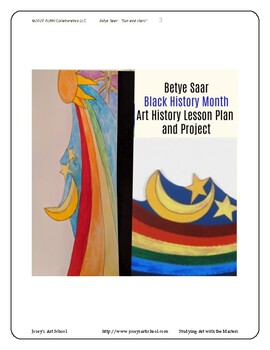
Teach about Black Artists Series: Prince Twins 7 7 Black Artist Art Lesson
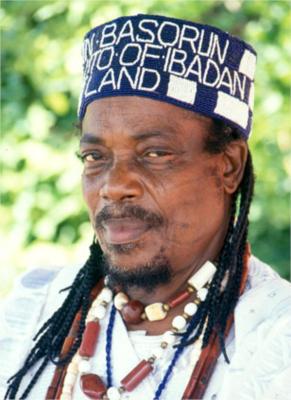
Twins Seven Seven, born Omoba Taiwo Olaniyi Oyewale-Toyeje Oyelale Osuntoki (3 May 1944 – 16 June 2011) was a Nigerian painter, sculptor and musician. He was an itinerant singer and dancer before he began his career as an artist, first attending in 1964 an Mbari Mbayo workshop conducted by Ulli Beier and Georgina Beier in Osogbo. Twins Seven Seven went on to become one of the best known artists of the Osogbo School.
SOURCE: CLICK HERE

The palm wine tapper's family
Twins Seven Seven's work is influenced by traditional Yoruba mythology and culture, and creates a fantastic universe of humans, animals, plants and Yoruba gods. Visually, his work resembles Yoruba carvings in the segmentation, division and repetition of his compositions; conceptually, it reflects this influence in the emphasis on transformation and balance, as well as its embodiment of dualities such as the earthly and the spiritual, past and present, industry and agriculture. Early works such as Dreams of the Abiku Child (1967) make allusion to concepts or figures in Yoruba cosmology and mythology, such as the abiku (devil child), and the orisha Osun. However, Twins Seven Seven also described his work as "contemporary Yoruba traditional art", not only paying homage to the influence of his cultural background but also to noting his responsiveness to current events and the postcolonial experience.
Some of his early work was influenced by his reading a copy of Amos Tutuola's book My Life in the Bush of Ghosts that was gifted to him by Georgina Beier. However, as he progressed as an artist, Twins Seven Seven focused more on imagery based on Yoruba folklore and his own dreams.
He attempted to avoid exposing himself to other painters who could potentially influence his unique individual painting style. Upon his first visit to the United States, he refused to attend a Picasso show, stating: "No, I don't want to risk being influenced by anyone else. All I am doing is in me already. I am not going to sit down in a studio and learn to mix colors like an European painter."
SOURCE: CLICK HERE
He was in line to become King of Ibadan upon which he would be named Osuntoki II. However, he first had to become the head of his clan, Mogaji. When the old Mogaji died, Twins Seven Seven was elected by his family to take his place, but the coronation kept being pushed back, and he died before he could assume this position.

Twins Seven-Seven spent much of the last 15 years of his life living and working in Philadelphia. In 2005 he was named UNESCO Artist for Peace in an award ceremony in Paris. His work is included in the collections of the Philadelphia Museum of Art, the Smithsonian Institution and other major international collections. In 2010 he was the subject of an exhaustive monograph and biography, Prince Twins Seven-Seven: His Art, His Life in Nigeria, His Exile in America, by Henry Glassie. A talented musician, he continued to perform throughout his career. Several of his early recordings have recently been reissued.
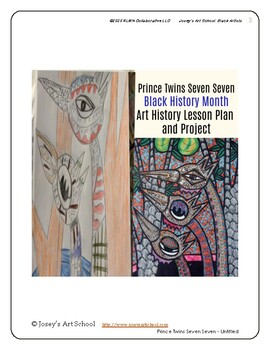
CLICK HERE TO FIND ALL OF MY ART LESSONS TO HELP YOU TEACH ABOUT BLACK ARTISTS
Teach about Black Artists: Lois Mailou Jones Black History Art Lesson
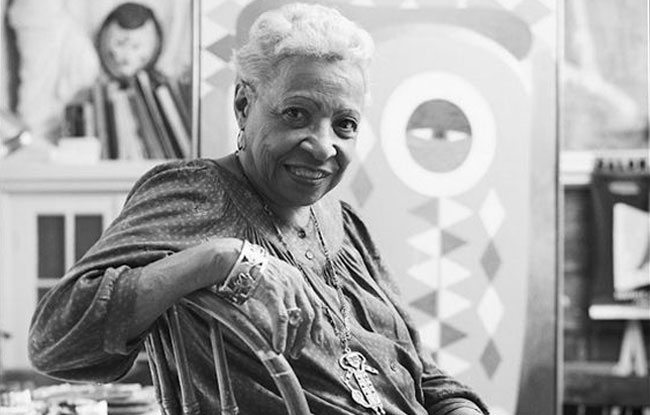
As a black female painter, Lois Mailou Jones (1905-1998) was well aware of the upward battle facing her in order to succeed in the art world. Born in Boston, Jones grew up in a building supervised by her father. After attending night school to get his law degree, however, Mr. Jones switched career paths, for which Jones credits him as a major inspiration for her own work ethic.1 The Jones family vacationed at Oak’s Bluff in Martha’s Vineyard, a place that Jones praised for its inclusivity and enthusiasm for its resident artists. Inspired by nature, Jones would paint watercolors of the island.2 Her parents, supportive of their daughter’s creativity, sent her to an arts high school and to extracurricular arts classes at the Museum of Fine Arts. Jones then received a full scholarship to the Museum School where she majored in design. Right out of school, Jones began a successful career in the textile design industry.
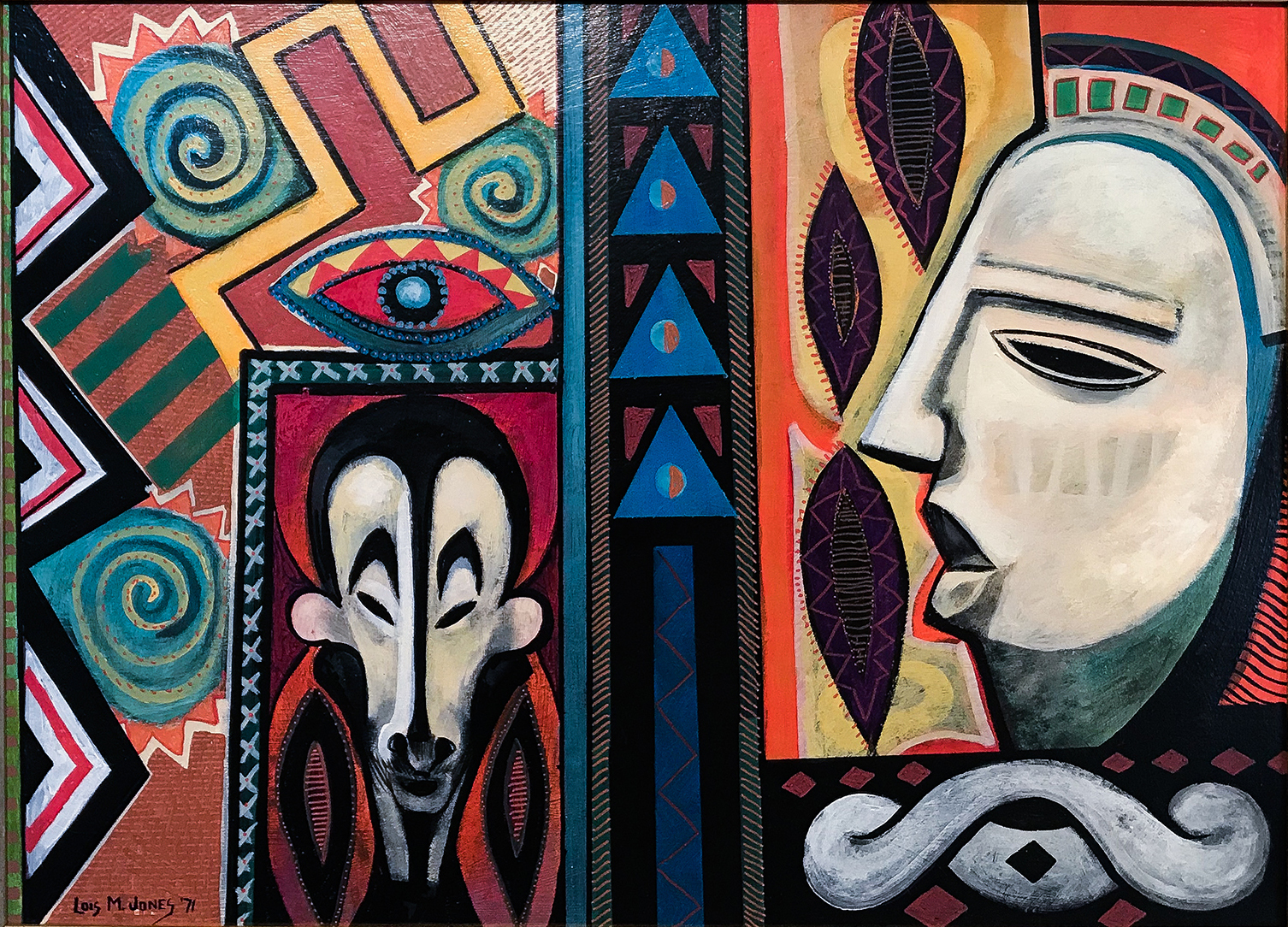
Dream of Nigeria
Following Jones’ immediate career boom, she experienced two events that would shape her outlook on her career and lead her to join Howard University’s art department in 1930.3 The first was a visit to a design firm where Jones saw a print of hers, Ganges, upholstered on their furniture. When she showed the head designer this print in her portfolio, he was so surprised that he called down all of his colleagues to look at this “colored girl” who had designed the Ganges fabric.4 This experience was an early wakeup call to Jones that her racial identity, whether she liked it or not, would impact her career. She also became aware of the limitations of the design world, namely its anonymity.5 This prompted Jones to leave textile design in favor of painting, hoping that high art would bring her name recognition.6
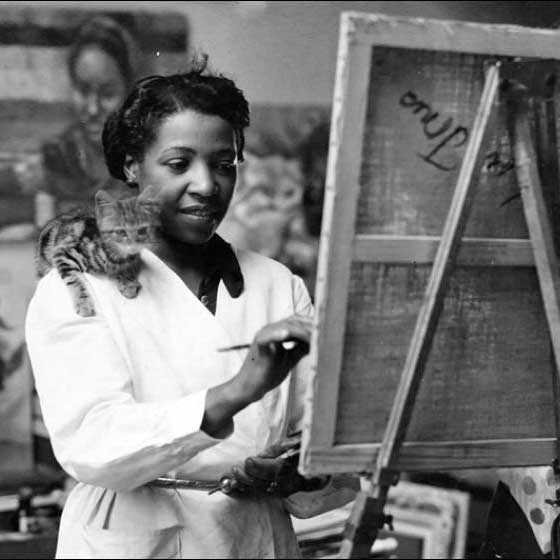
However, when Jones approached her alma mater of the Museum School asking for a teaching position in fine art, they turned her down and instead suggested that she “go down South and help [her] people.”7 Rejected from her hometown, Jones did indeed head south to Howard. Despite the circumstances, Jones enjoyed a successful teaching career and artistic success while at Howard, traveled to Europe and Asia with students, while also keeping in dialogue with many important black cultural advocates.8 Jones’ art always gravitated to the styles of Post-Impressionism and early Modernism, but her work went through multiple phases of heavy African diasporic influence, most notably from Haitian culture. 9

However, Jones did not want her identity to affect the public’s reading of her artwork. Seeing how she was put on spectacle and ghettoized early in her career, Jones’ concern was that her artistic merit would be ignored. She refused to be hindered by her race or gender, and thus obsessively managed her public persona. Friend and writer Tritobia Hayes Benjamin said of Jones, “Lois was the quintessential self-publicist… She had every newspaper, report, and other documentation relating to her career and its development.”10 By keeping all public records of herself and her art, Jones knew exactly how the media was reading her and how to present herself to curators, collectors, journalists, and so forth. Jones also refused to deliver her artwork to galleries herself, or even accept awards in public. Instead, she would have one of her white friends do it for her. 11 Jones defended her right to remain faceless, saying, “I felt it was better to get as strong as possible before I let them know that Lois Jones was Black.”12 Jones had a vision of how she should appear to the public and tried everything in her power to maintain that vision.
Such control undoubtedly helped Jones advance her career. However, in order for Jones to receive the level of success that she desired, she had to maintain a certain degree of anonymity. Jones regretted that she had to prove herself as an artist and had to fight against the modifiers “African American” or “female.” With careful control over her public image, however, Jones fought against classification and lifted herself into the world of high art.
SOURCE: CLICK HERE

CLICK HERE TO FIND MY RESOURCES TO HELP YOU TEACH ABOUT BLACK ARTISTS
Black History Artist Spotlight: Horace Pippin

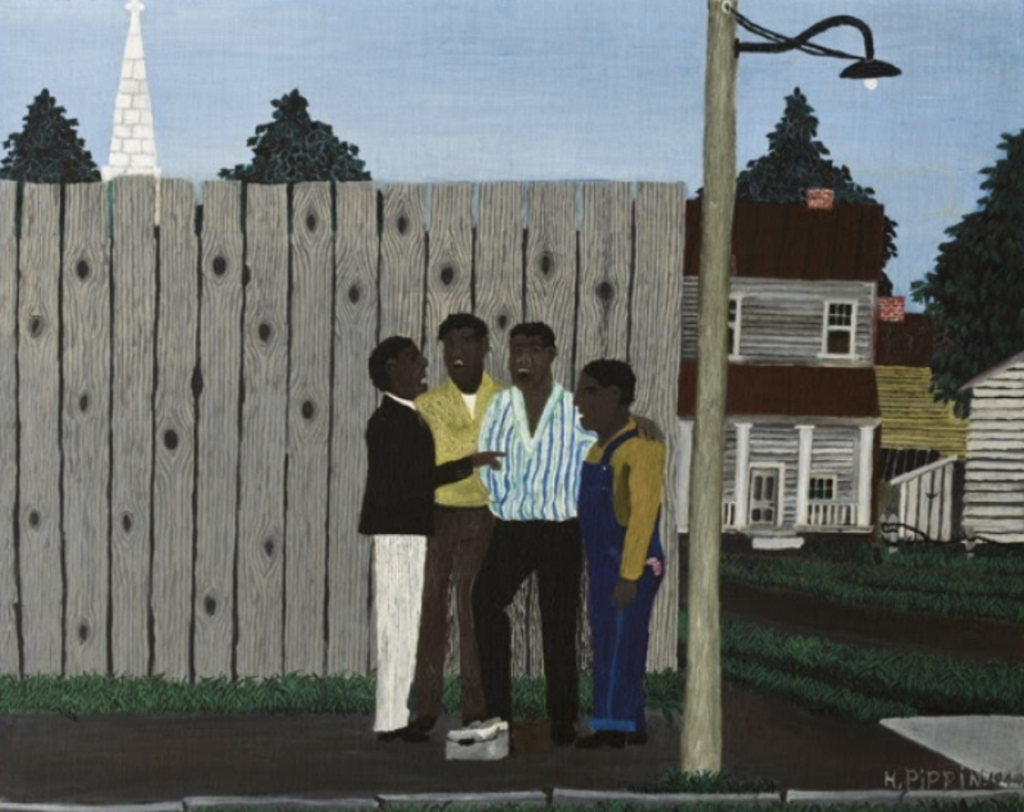
Horace Pippin, Harmonizing (1944).
Horace Pippin was the first African American artist to be the subject of a monograph and, during his life, was featured in both commercial and museum exhibitions around the country, At the time of his death, in 1946, the New York Times noted that Albert C. Barnes, founder of the Barnes Foundation, described Pippin as the most important Black painter in America. And yet, in the years since, his name has faded into relative obscurity.
Born February 22, 1888, Pippin was a direct descendant of enslaved peoples and a World War I veteran. While serving with the all-Black 369th Infantry, also known as the Harlem Hellfighters, Pippin was wounded by a German sniper. He lost mobility in his right arm and never completely regained it. When he returned from the war, Pippin began making art in part as a form of physical therapy. He taught himself to paint by holding the brush in his right hand and using his left arm to move it.
After completing his first oil painting in 1931, Pippin went on to complete some 140 canvases between then and his death, 15 years later. Some of Pippin’s paintings depicted scenes from the war, as well as the racism he encountered upon his return to the US. Others are history paintings, biblical scenes, or simply show Black people in everyday life.
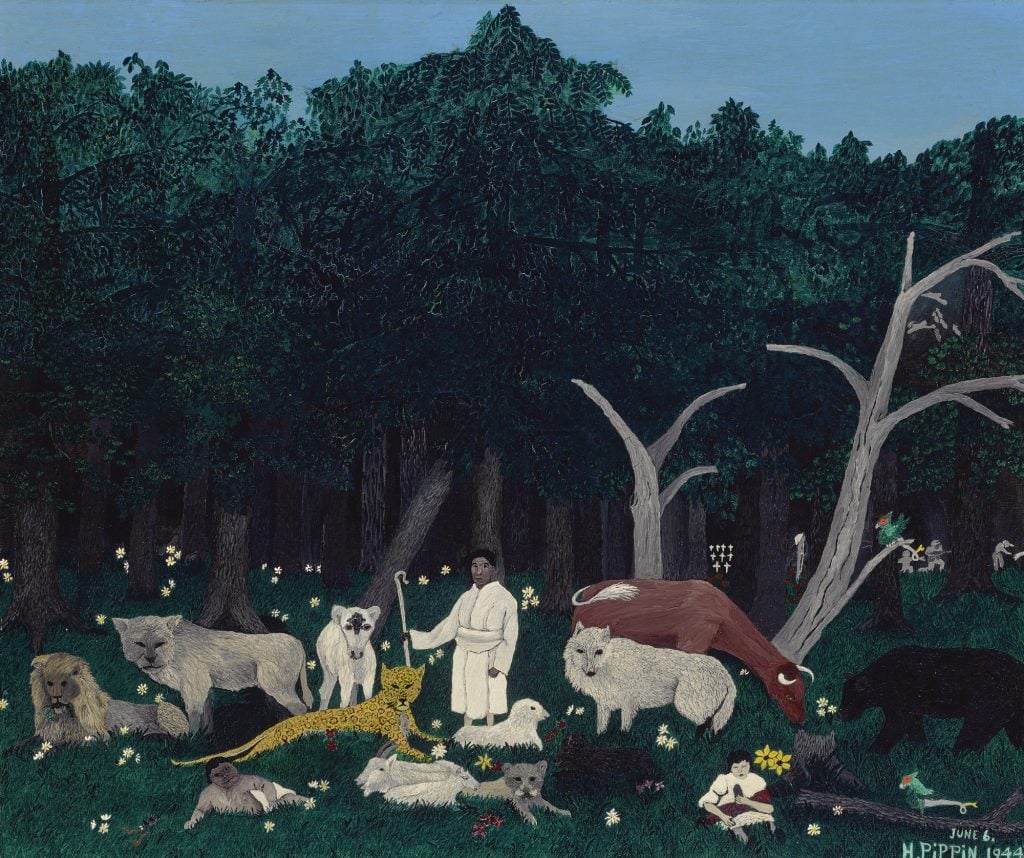
Holy Mountain
One reason that Pippin remains relatively unknown in the mainstream art world likely has to do with lacking the particular narratives about education, influence, and lineage that art history tends to value. Pippin was self-taught, disabled, and a veteran.
Whose stories are told? Whose are valued? Despite being one of the most important artists of his time—and his influence on contemporary painting remains clear—Pippin has received little recognition.SOURCE: CLICK HERE
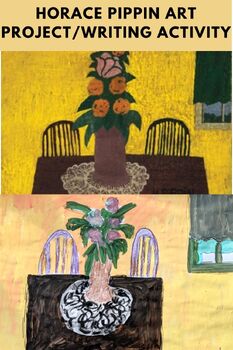
CLICK HERE TO VIEW MY SELECTION OF BLACK ARTISTS LESSON PLANS
Black History Artist spotlight: Gerald Williams
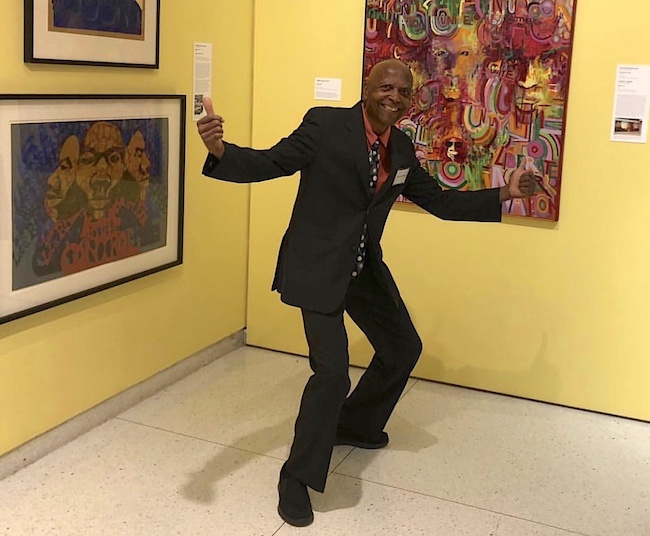
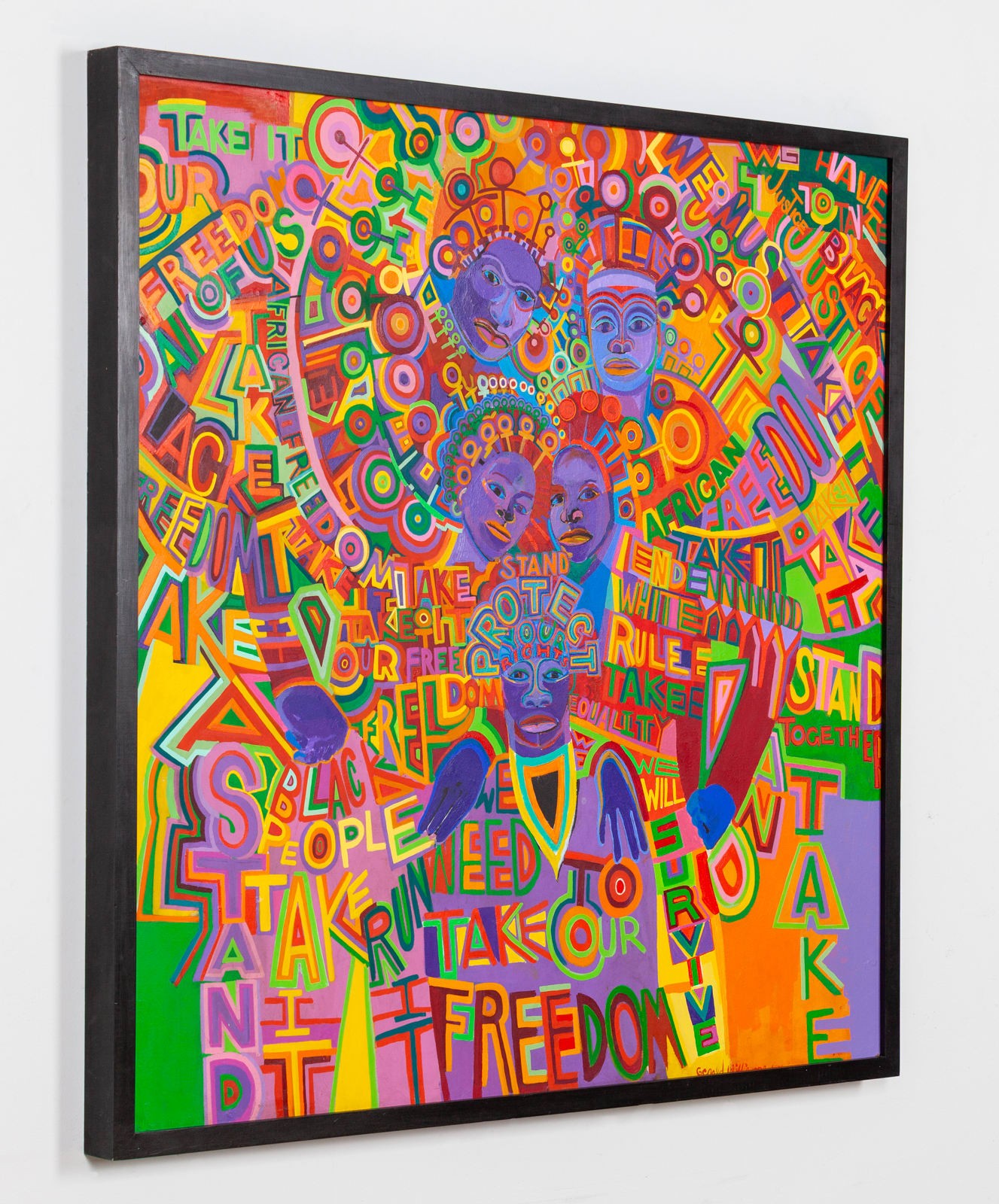
Take It
“A nation is a mental construct. Country is land, something you can dig in, concrete. A nation is how you perceive yourself, the relationships that people have among one another. The interactions that people have. That’s what makes a nation.”
- Gerald Williams
Gerald Williams is an American painter whose work explores culture, place and identity from a global perspective. Williams is one of the original five cofounders of AFRICOBRA, an artist collective formed on the south side of Chicago in 1967, which became the definitive visual expression of the Black Arts Movement.
Defined by civil rights struggles that came to a head with Martin Luther King Jr.’s assassination and the ensuing riots across the United States, 1968 was a pivotal if violent turning point for race relations in the country. That year, five African American artists in Chicago formed a collective that aimed to celebrate black culture and define its aesthetics and that came to be known as AfriCOBRA (African Commune of Bad Relevant Artists). As founding member Gerald Williams said in a 2011 interview for the oral history project Never the Same, the group, which is still active today, set out to investigate whether there was or should be such a thing as a culturally specific black art.
Source: CLICK HERE

Family
In an interview about the movement, Williams had this to say:
RZ: And what did belonging to AfriCOBRA and the AfriCOBRA philosophy mean for you as a young artist?
GW: Oh, it meant everything. It really did, you know. I didn’t have a clear direction other than what I was gleaning from my studies at the Art Institute and other art history classes. It turned me completely around and really caused me to focus on my own environment. And I can tell you that one of the instructors I had had, I had to go to a ballet, as part of a music appreciation class, and it was Coppélia or one of those ballets, and then later on I was just doing some sketches of some ballet dancers, in a life drawing class or something, and doing quick sketches of ballet dancers, Degas kinda like flashed through my mind, and then later on in another class an instructor said, “you don’t know anything about ballet.” And he said, “why don’t you draw what’s around you?” It made me mad; it was kind of an insult. I said, no, I don’t, you know, I like it, it’s music and dance and it’s expressive and colorful and you know, and I like the way the dancers move their bodies and it would be a nice thing to be able to draw! [chuckles]
But you know, he was right, you know, paint what you know, or draw what you know, and look at it as what you know. And it was just about that time that AfriCOBRA really became an important aspect of my involvement in art. So it caused me to focus a lot, it was a linchpin for all of us. We all had our style, Wadsworth had a style that was already well developed and Jeff had a style that was already developed and Jae had her medium that she was developing as well as Barbara. But we all made a quantum leap from where we started to where we wound up after our first conscious effort to focus on the principles that we decided to work on.
SOURCE: Click here for full Interview
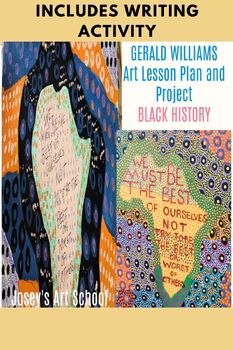
CLICK HERE TO VIEW ALL OF THE LESSONS I HAVE IN MY "TEACH ABOUT BLACK ARTISTS" SERIES
Black History Feature: Artist Spotlight on Howardena Pindell
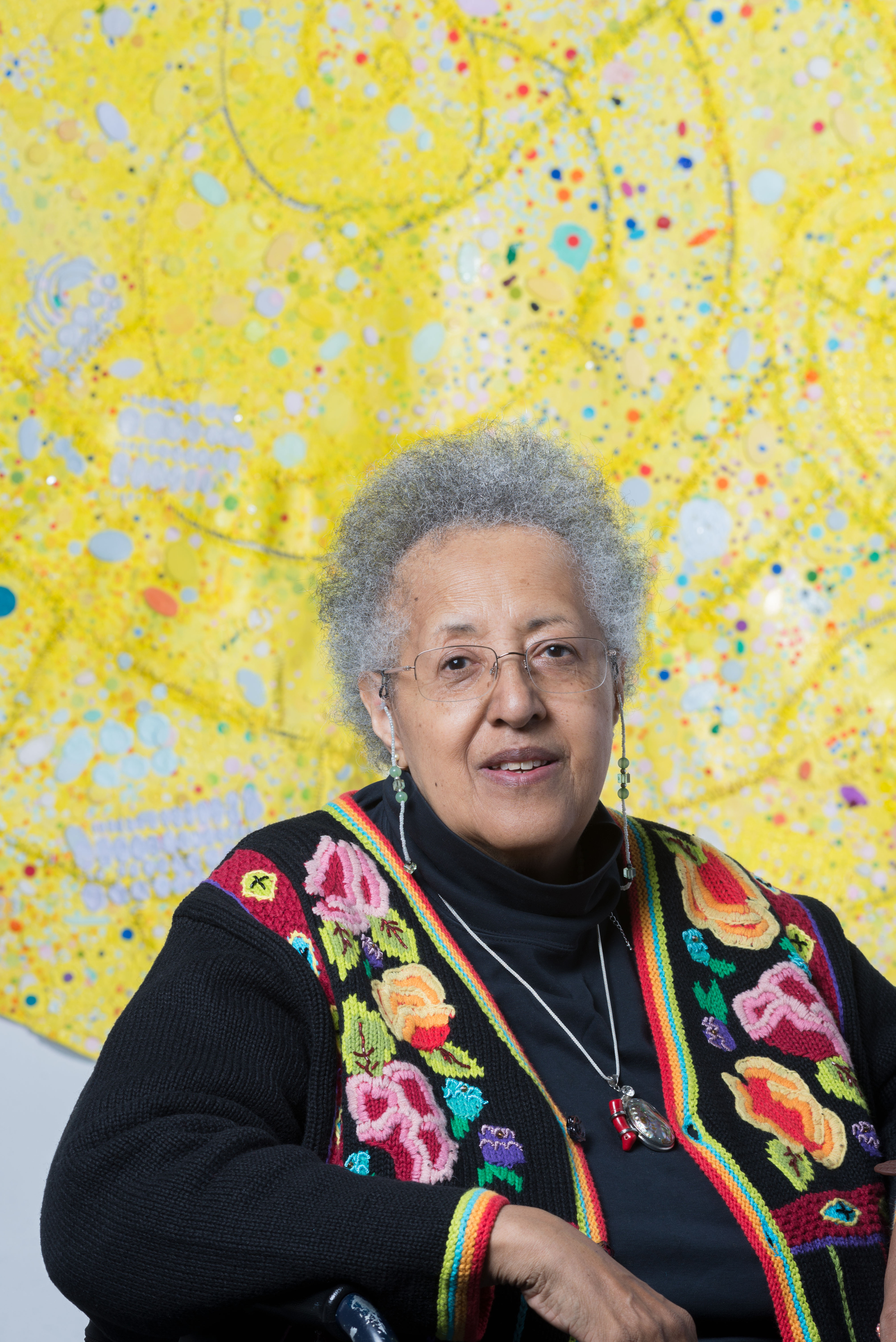
Welcome to my series "Teach about Black Artists"
I have created a series of Art lessons inspired Black and Brown Contemporary Artist to inspire the artist in your students. I want to make art from all cultures with all of its unique qualities available to all schools. My hope is that this promotes not only awareness of the different styles of art but also an appreciation for the many ways people express themselves. In this way, perhaps Dr. Montessori's vision for peace through children can become a reality.
.
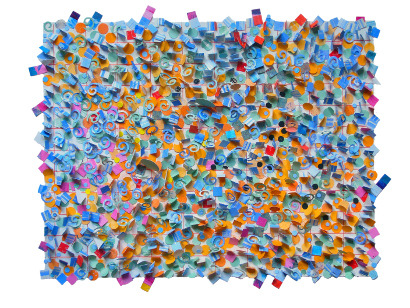
Howardena Pindell, Untitled, 2010.
Today's Featured Artist is Howardena Pindell
Howardena Pindell is an American artist, curator, and educator. She is known as a painter and mixed media artist, her work explores texture, color, structures, and the process of making art; it is often political, addressing the intersecting issues of racism, feminism, violence, slavery, and exploitation. She is known for the wide variety of techniques and materials used in her artwork; she has created abstract paintings, collages, "video drawings," and "process art."
Source: CLICK HERE

Pindell often employs lengthy, metaphorical processes of destruction/reconstruction. She cuts canvases in strips and sews them back together, building up surfaces in elaborate stages. She paints or draws on sheets of paper, punches out dots from the paper using a paper hole punch, drops the dots onto her canvas, and finally squeegees paint through the “stencil” left in the paper from which she had punched the dots. Almost invariably, her paintings are installed unstretched, held to the wall merely by the strength of a few finishing nails. The artist’s fascination with gridded, serialized imagery, along with surface texture appears throughout her oeuvre.
Source: CLICK HERE

Autobiography: The Search (Chrysalis/Meditation, Positive/Negative)
To find art lessons inspired by Howardena Pindell and other Black Artists, click here:
Joseys Art School Episode #105 Eiffel Tower Paris Kids Drawing Lesson Art Lesson for Kids
You can find my art lessons on Teachers Pay Teachers
CLICK HERE: https://www.teacherspayteachers.com/Store/Joseys-Art-School
Look at my free art videos on YOUTUBE: https://www.youtube.com/playlist?list=PLbQExZltWJHERASlzbZ6nLtjeqvpAgLY7

